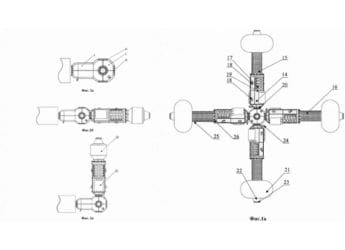- Home
- Science
- Science News
- Human Outer Ears May Have Evolved from Ancient Fish Gills, Study Finds
Human Outer Ears May Have Evolved from Ancient Fish Gills, Study Finds
Research shows human outer ears may trace their origins to fish gills via evolutionary transformations.

Photo Credit: Unsplash /zhengtao tang
The team showed that reptiles and amphibians inherited gill-like structures from fish.
New research has highlighted a fascinating link between human outer ears and the gills of ancient fish. Gene-editing experiments have revealed that the cartilage in fish gills may have migrated to form the outer ear structures seen in mammals today. Scientists believe this evolutionary transformation took place millions of years ago, suggesting that the origins of elastic cartilage in human ears may date back to early marine invertebrates such as horseshoe crabs.
Study Highlights Evolutionary Link
According to a study published in Nature, researchers led by Gage Crump, Professor of Stem Cell Biology and Regenerative Medicine at the University of Southern California, sought to uncover the mysterious origins of mammalian outer ears. Elastic cartilage, the primary component of human outer ears, is unique to mammals and is more flexible than other types of cartilage found in the human body. The researchers found that this type of cartilage is also present in the gills of modern bony fish, such as zebrafish and Atlantic salmon.
Gene-Editing Experiments Provide Insight
As reported in Live Science, in experiments, human genetic enhancers associated with outer ear development were inserted into zebrafish genomes. The enhancers triggered activity in the fish gills, suggesting a genetic link between the structures. The reverse experiment, involving the introduction of zebrafish enhancers into mouse genomes, showed activity in the mice's outer ears, reinforcing the connection between fish gills and mammalian ears.
Ancient Marine Connections
The team further demonstrated that reptiles and amphibians also inherited gill-related structures from fish. Evidence from green anole lizards indicated that elastic cartilage had begun migrating from gills to ear canals by the time reptiles appeared approximately 315 million years ago. Additionally, a gene control element in horseshoe crabs, organisms that emerged 400 million years ago, activated activity in fish gills, pointing to even deeper evolutionary ties.
As per the researchers, these findings highlight the adaptive reuse of ancestral gill structures in the development of mammalian ears over evolutionary history.
Get your daily dose of tech news, reviews, and insights, in under 80 characters on Gadgets 360 Turbo. Connect with fellow tech lovers on our Forum. Follow us on X, Facebook, WhatsApp, Threads and Google News for instant updates. Catch all the action on our YouTube channel.
Related Stories
- Samsung Galaxy Unpacked 2025
- ChatGPT
- Redmi Note 14 Pro+
- iPhone 16
- Apple Vision Pro
- Oneplus 12
- OnePlus Nord CE 3 Lite 5G
- iPhone 13
- Xiaomi 14 Pro
- Oppo Find N3
- Tecno Spark Go (2023)
- Realme V30
- Best Phones Under 25000
- Samsung Galaxy S24 Series
- Cryptocurrency
- iQoo 12
- Samsung Galaxy S24 Ultra
- Giottus
- Samsung Galaxy Z Flip 5
- Apple 'Scary Fast'
- Housefull 5
- GoPro Hero 12 Black Review
- Invincible Season 2
- JioGlass
- HD Ready TV
- Laptop Under 50000
- Smartwatch Under 10000
- Latest Mobile Phones
- Compare Phones
- Huawei Nova 15
- Huawei Nova 15 Pro
- Huawei Nova 15 Ultra
- OnePlus 15R
- Realme Narzo 90x 5G
- Realme Narzo 90 5G
- Vivo S50 Pro Mini
- Vivo S50
- Asus ProArt P16
- MacBook Pro 14-inch (M5, 2025)
- Huawei MatePad 11.5 (2026)
- OnePlus Pad Go 2 (5G)
- Huawei Watch 10th Anniversary Edition
- OnePlus Watch Lite
- Acerpure Nitro Z Series 100-inch QLED TV
- Samsung 43 Inch LED Ultra HD (4K) Smart TV (UA43UE81AFULXL)
- Asus ROG Ally
- Nintendo Switch Lite
- Haier 1.6 Ton 5 Star Inverter Split AC (HSU19G-MZAID5BN-INV)
- Haier 1.6 Ton 5 Star Inverter Split AC (HSU19G-MZAIM5BN-INV)

















